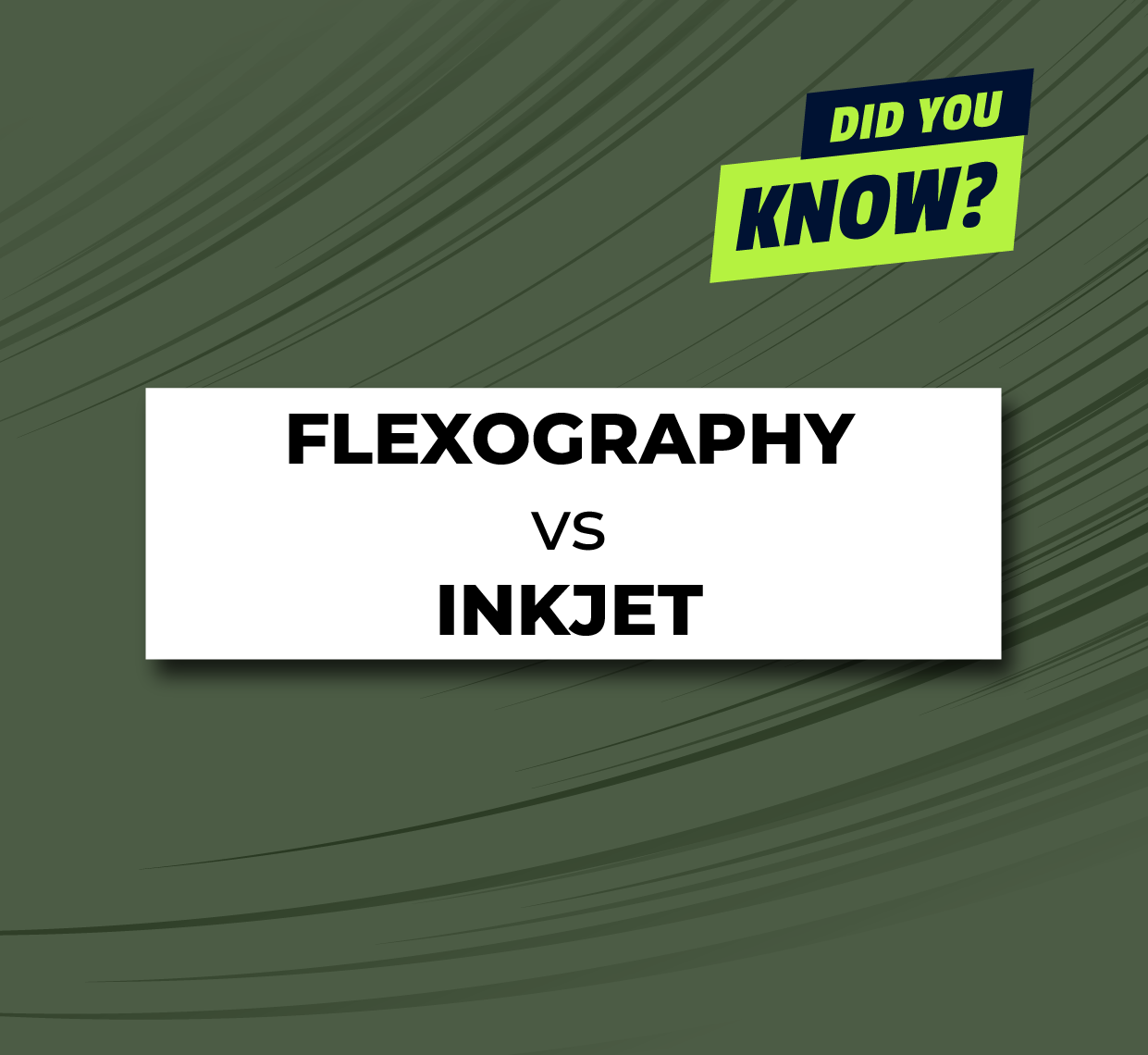In the world of industrial printing, the choice between flexographic printing and inkjet printing is crucial for determining efficiency and productivity. For companies operating at high volumes, flexo printer represents the most effective solution in terms of speed and costs, while inkjet offers greater flexibility and quality on smaller print runs.
- Production Speed:
Flexography is a printing technology known for its high production speed, which is one of its main advantages, especially in industrial production. It can achieve high printing speeds, exceeding 800-900 m/min, depending on the machines and materials used. This makes it ideal for large-scale production, where time efficiency is crucial, reducing delivery times and increasing production capacity. Digital inkjet printing, while versatile and high-quality, generally cannot compete with flexography in terms of speed, being better suited to smaller or short-run productions.
- Efficiency and Lower Operating Costs for High Volumes:
Flexo printers can operate continuously, keeping operational costs low. In contrast, digital inkjet printing, though suitable for short runs, is more expensive for high volumes due to consumables and the need for frequent maintenance of printheads, which increase machine downtime and overall costs.
- Material Versatility:
One of the strengths of flexographic printing is its ability to print on a wide variety of materials, from plastic to paper, cardboard to films. This makes it particularly useful in industries such as food and pharmaceutical packaging, where printing on non-traditional materials is required. Inkjet printers, on the other hand, are more limited and perform better on smooth, porous materials like paper and cardboard. While specialized inks for plastic materials exist, the versatility of inkjet printing does not match of flexography, especially when dealing with complex materials.
- Consistency and Quality:
Consistency in print quality is another key advantage of flexography, particularly for long runs. Flexographic machines ensure stable and uniform printing throughout production, with minimal color and resolution variations. In contrast, digital inkjet machines, while initial quality can be excellent, may experience more noticeable fluctuations in quality over long runs due to ink management and the wear or maintenance needs of the printheads.
If the main goal is rapid, large-scale production, flexo is the most suitable printing technology. Its cost-efficiency and ability to maintain high speeds make it indispensable for industries needing standardized high-volume runs.
Despite the growth of digital printing, flexography remains the dominant choice for mass production, offering an optimal balance of speed, cost and quality. Inkjet, however, finds its niche in applications requiring customization and variable prints, even though it cannot compete with flexo in terms of speed.




